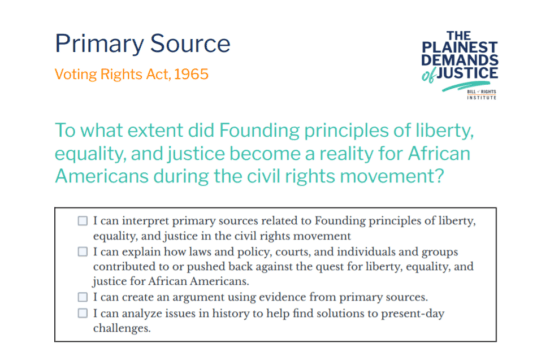



Government & Politics Unit 6 – Activities + Essays
44 items

Political Participation and Elections | Government & Politics: Civics for the American Experiment
Video
Video
4 Min
What happens when young people step up to shape their communities, states, and nation? In this video, discover the vital role civic engagement plays in a self-governing society—and how individuals of all ages can make a difference, even before they’re eligible to vote.
Explore how participating in local boards, volunteering, communicating with representatives, and practicing civic virtues like responsibility and justice strengthen our constitutional republic. From town halls to national campaigns, your actions help uphold the promise of “We the People.”
4 Min
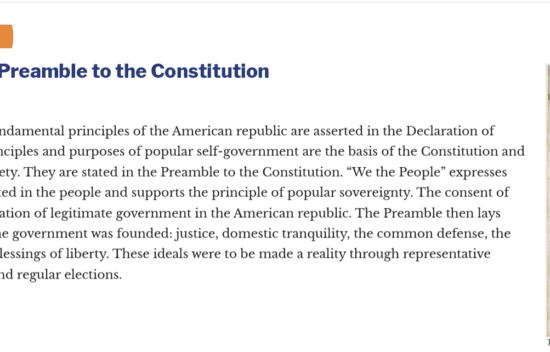
Preamble to the Constitution
Activity
Activity
The text of the preamble to the Constitution and corresponding comprehension questions.
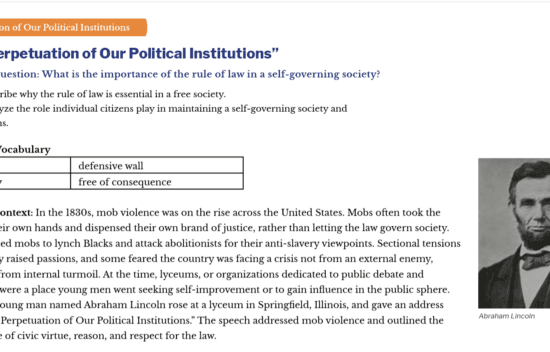
The Perpetuation of Our Political Institutions
Activity
Activity
Help students understand why the rule of law is essential in a free society and the role individual citizens play in maintaining a self-governing society and institutions.
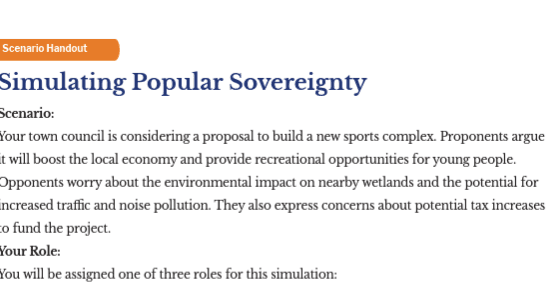
Simulating Popular Sovereignty Handout
Activity
Activity
How can a community balance diverse needs and interests to achieve a solution that reflects the will of “We the People?”
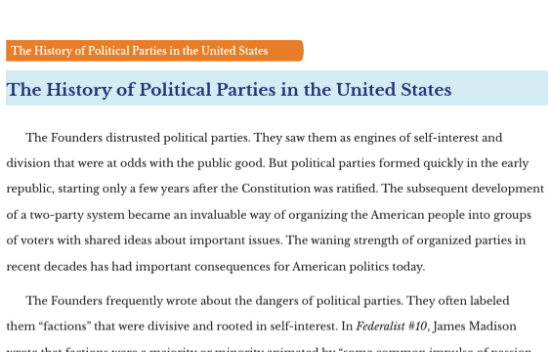
The History of Political Parties in the United States
Essay - 1248 Words
Essay
1248 Words
Explore the history of political parties from the Founding Era to modern day.

Federalist 10
Activity
Activity
Why did the Framers believe a large republic would create a stable and lasting government that protected against the violence of faction?
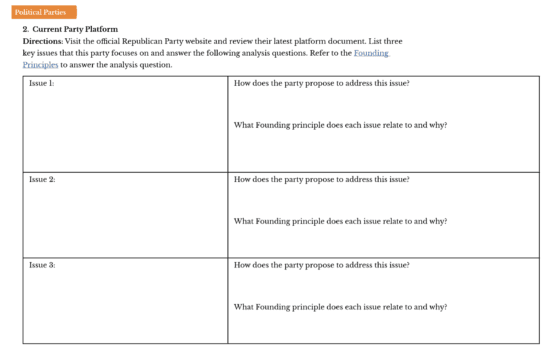
Political Parties Research Activity
Activity
Activity
Explore the modern and historical political parties to understand their foundational positions, key policies, and roles in American politics.
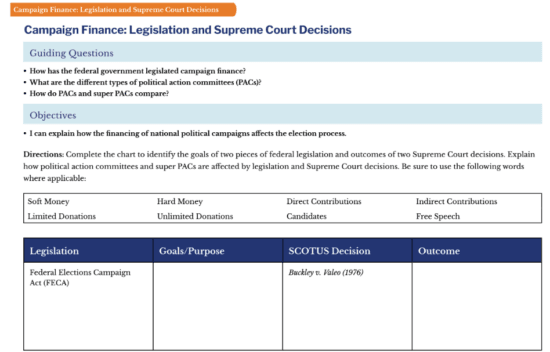
Campaign Finance Graphic Organizer
Activity
Activity
Help students explain how the financing of national political campaigns affects the election process.
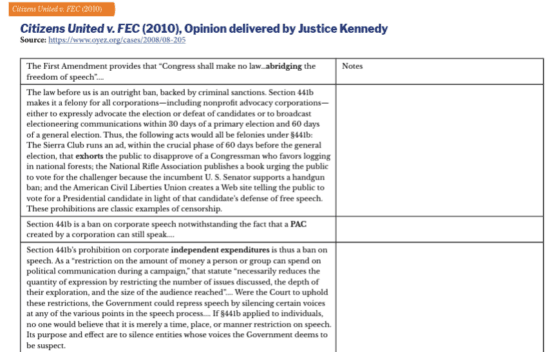
Citizens United v. FEC (2010)
Activity
Activity
The Supreme Court case Citizens United v. FEC (2010) serves as the primary source for this case study, providing a pivotal ruling on campaign finance and the role of money in elections.
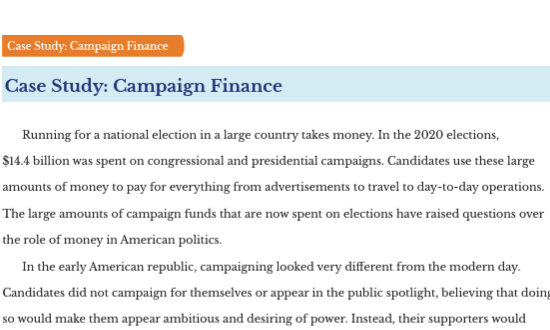
Campaign Finance Case Study
Essay - 619 Words
Essay
619 Words
Examine the the role of money in American politics.
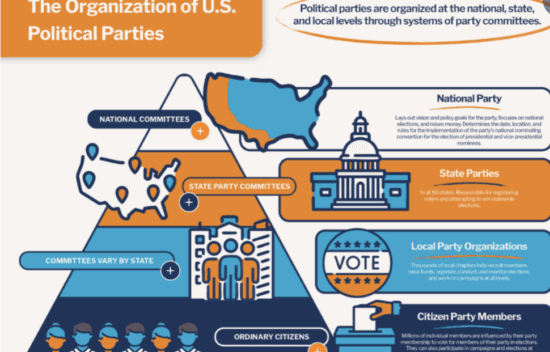
The Organization of U.S. Political Parties
Activity
Activity
Graphic that helps students see the structual oranization of policitical parties.
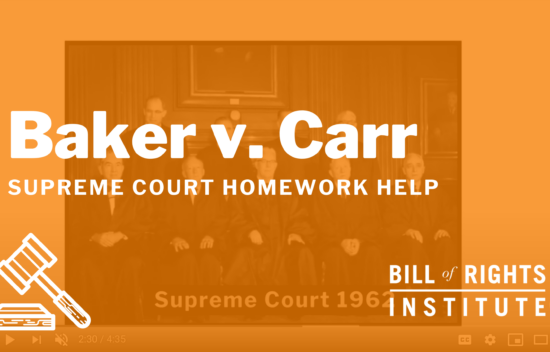
Baker v. Carr | Homework Help from the Bill of Rights
Video
Video
5 Min
In this Homework Help video, learn the story of the landmark Supreme Court case of Baker v. Carr. The case explores the question of a state’s right to control electoral lines otherwise known as gerrymandering.
The case ruling concluded that the Supreme Court could hear cases pertaining to redistricting because of the Equal Protection Clause in the 14th Amendment through the process of incorporation which argues that states must adhere to the protections of guaranteed in the Bill of Rights. How did the ruling in this case contribute to the democratic principle of “one person-one vote”?
5 Min

The Origins of Partisanship | BRI’s Homework Help Series
Video
Video
5 Min
This latest installment of our Homework Help Institute of History series addresses the origins of partisanship in the United States. In the late 18th Century, the new nation was at risk of being torn apart as factions developed between Federalists and Anti-Federalists whose differences over the nature and structure of the new government played out in pamphlets, newspaper essays, state ratifying conventions, in taverns, and on street corners. Some compromise was reached with the ratification of The Bill of Rights, but differences over policy continued to play out among factions and the Federalists and Democratic-Republican parties formed. This video is intended as a general overview of this period of U.S. History, and a springboard for a deeper exploration of the various political disputes of the late 1700s and early 1800s.
5 Min

Speaker Joseph Cannon Dethroned
Essay - 2281 Words
Essay
2281 Words
By the end of this section, you will compare the goals and effects of the Progressive reform movement.

The History of Voting Restrictions and Expanding Suffrage
Essay - 1098 Words
Essay
1098 Words
Explore the expansion of franchise and suffrage movements from the Colonial Era to Barack Obama.
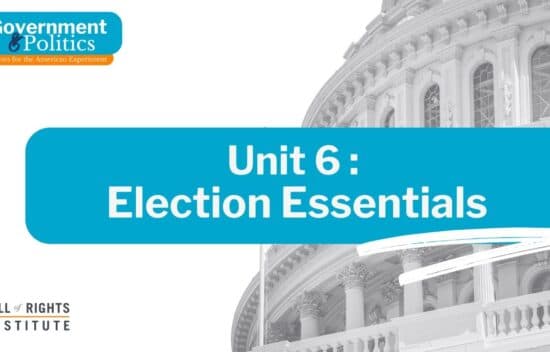
Elections Essentials | Government & Politics: Civics for the American Experiment
Video
Video
4 Min
What happens when citizens understand their voting power and engage in the democratic process? In this video, explore the evolution of voting rights in the United States and discover what motivates people to cast their ballots—and why that matters.
From the amendments that expanded suffrage to the psychological and structural factors that affect voter behavior, this video explains how elections work and why participation is key. Learn about the Electoral College, congressional elections, and what influences voter turnout.
4 Min
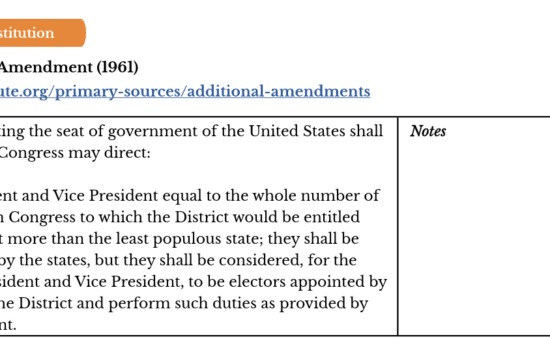
Voting Rights Amendments to the Constitution
Activity
Activity
A primary source analysis of the various amendments to the Constitution that have expanded access to voting.
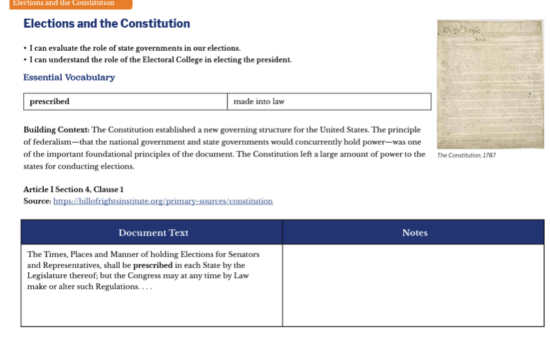
Elections and the Constitution
Activity
Activity
The text of the Constitution and corresponding analysis questions that explore it's provisions for elections.

Voter Turnout in Midterm and General Elections
Activity
Activity
Five graphs that illustrate about how demographics can affect voter turnout.

Voting Rights Timeline
Activity
Activity
A history of voting rights from the ratification of the Constitution through World War II and corresponding analysis questions.

Primary and Caucus: Fact, Choice, Defend
Activity
Activity
Learn about primary and caucus features while deciding and defending if they should stay or go.

Electoral College Case Study
Essay - 959 Words
Essay
959 Words
Examine the history and controversy surrounding the Electoral College, analyzing its evolution and impact through key elections such as 1800, 1824, and 2000.
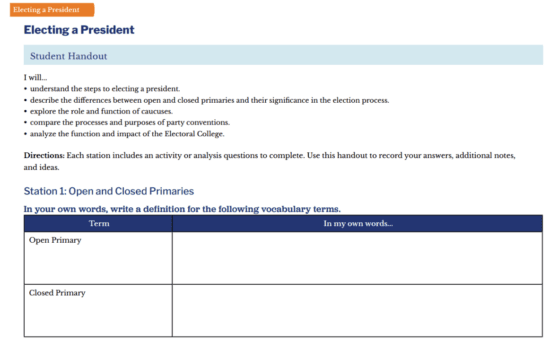
Electing a President Station Activity
Activity
Activity
A station based activity to showcase the steps of a US presidential election.

Federalist 10 | Politics and Parties
Activity
Activity
A primary source to explore the dangers of factions and how the Constitution was designed to limit their powers.
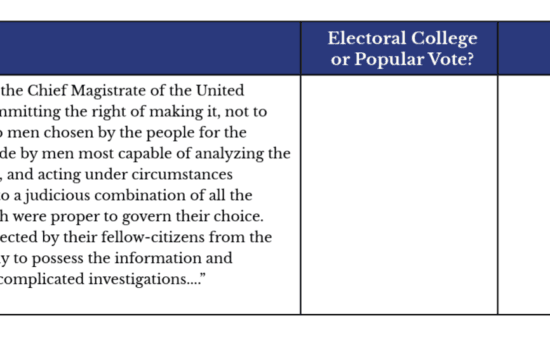
Methods of Election Student Handout
Activity
Activity
What are the differences between the popular vote and the Electoral College vote?
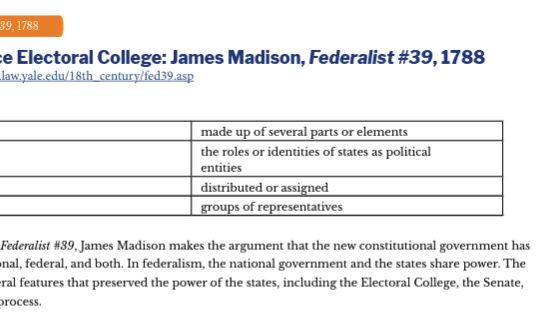
Electoral College Primary Sources
Activity
Activity
Analyzes the Electoral College through primary sources, including Madison's Federalist #39, Article II of the Constitution, and the Twelfth Amendment.
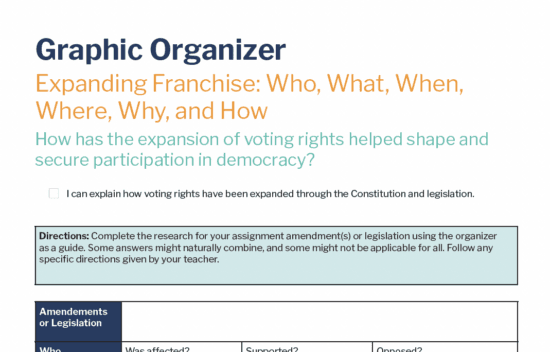
Expanding Franchise Graphic Organizer:
Activity
Activity
An activity to help students explain how voting rights have been expanded through the Constitution and legislation.
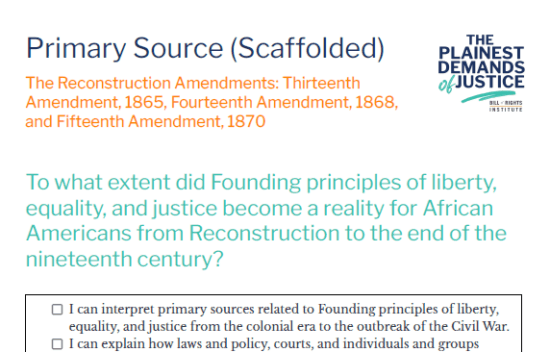
The Reconstruction Amendments: Thirteenth Amendment, 1865, Fourteenth Amendment, 1868, and Fifteenth Amendment, 1870
Activity
Activity
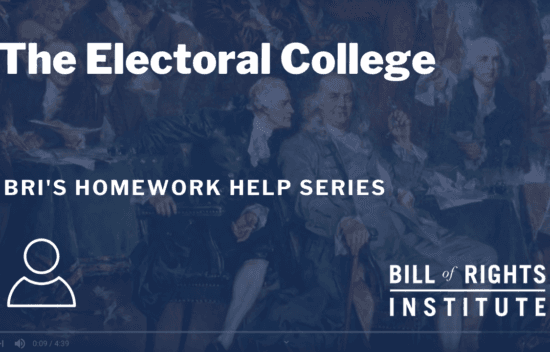
The Electoral College | Homework Help from the Bill of Rights Institute
Video
Video
7 Min
In this Homework Help narrative, learn about the origins and functions of the Electoral College. This constitutional institution has long been the subject of intense debate and scrutiny, and this video challenges students to think about it for themselves.
7 Min

Alexis de Tocqueville, Democracy in America, Book One, Part Two, Chapter Two
Activity
Activity
Excerpted text of Alexis de Tocqueville's "Democracy in America" with corresponding comprehension questions.

Federalist 51 | Interest Groups at Work
Activity
Activity
A look at this primary source that explores how a large country helps prevent a single tyrannical majority from forming.

Federalist #10 Sphere of Influence
Activity
Activity
An interactive that engages students with the problems of factions and how the Constitution was designed to limit their powers.
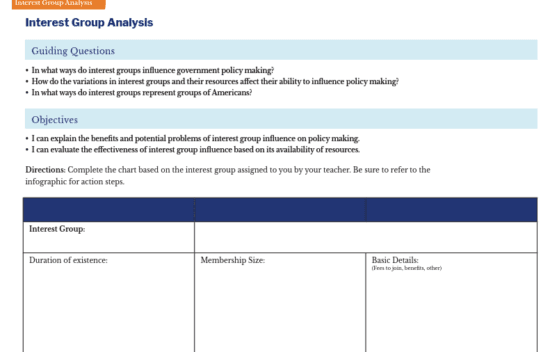
Graphic Organizer: Interest Group Analysis
Activity
Activity
A discovery activity to help students how various interest groups influence civil society.

Interest Groups Analysis
Activity
Activity
An interactive activity that defines the way interest groups work to pass legislation.
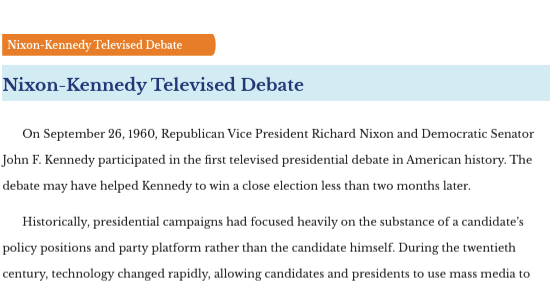
Nixon-Kennedy Televised Debate
Essay - 567 Words
Essay
567 Words
Help students understand the role of media in the 1960 presidential debate between Nixon and Kennedy.
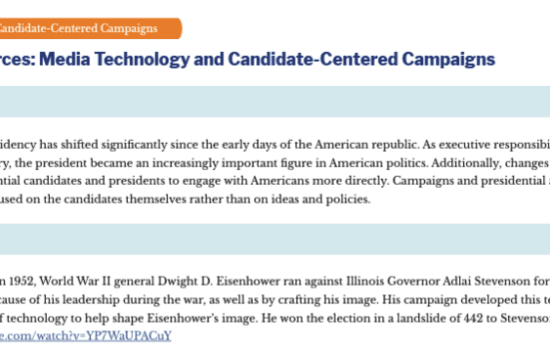
Media Technology and Candidate-Centered Campaigns Primary Sources
Activity
Activity
Three primary sources showcase how media technology, from television ads like Eisenhower's "I Like Ike" to Clinton's appearance on The Arsenio Hall Show and Trump's Twitter usage, have been pivotal in shaping presidential candidates' public images and connecting directly with voters.

Watchdog Reporting Graphic Organizer
Activity
Activity
An activity to help students explore how the media serves as a watch dog, holding the government accountable.
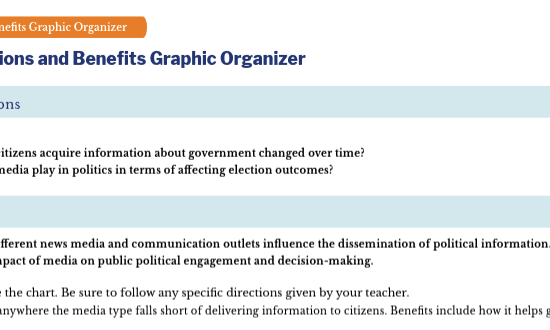
Media Limitations and Benefits Graphic Organizer
Activity
Activity
Help students analyze how different news media and communication outlets influence the dissemination of political information.

Media Source Analysis and Reflection
Activity
Activity
The sources that guide students understanding on how news media and communication outlets influence the dissemination of political information.
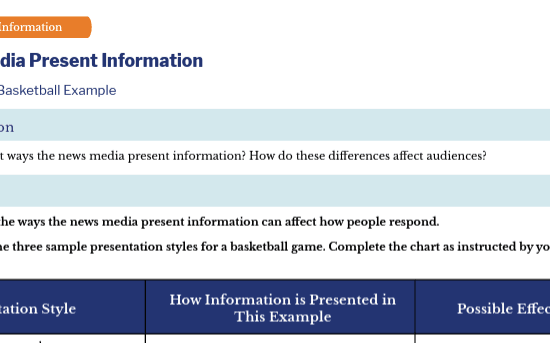
Information Presentation Example Graphic Organizer
Activity
Activity
An activity to engage students with the ideas surrounding how the media presents information and how it affects how people participate and interact.
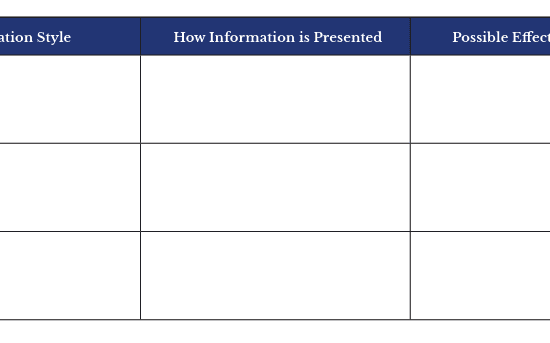
Information Presentation Blank Graphic Organizer
Activity
Activity
An activity to engage students with the ideas surrounding how the media presents information and how it affects how people participate and interact.

Citizens United v. FEC | BRI’s Homework Help Series
Video
Video
4 Min
Citizens United v. FEC was a Supreme Court case surrounding campaign finance and corporate involvement in politics. The Federal Election Commission was created in 1971 and greatly regulated the amount of campaign finance political candidates were able to receive. By 2002, the Bipartisan Campaign Finance Reform Act (McCain-Feingold Act) restricted organizations from financing issue-based advertisements on behalf of candidates. Citizens United released a million dollar ad against Hillary Clinton. Before the film aired, Citizens United challenged the McCain-Feingold Act, stating that money was a form of Free Speech, which is protected by the First Amendment. The Supreme Court ruled the McCain-Feingold Act as unconstitutional, but stated that corporations still cannot give money directly to political candidates.
4 Min

